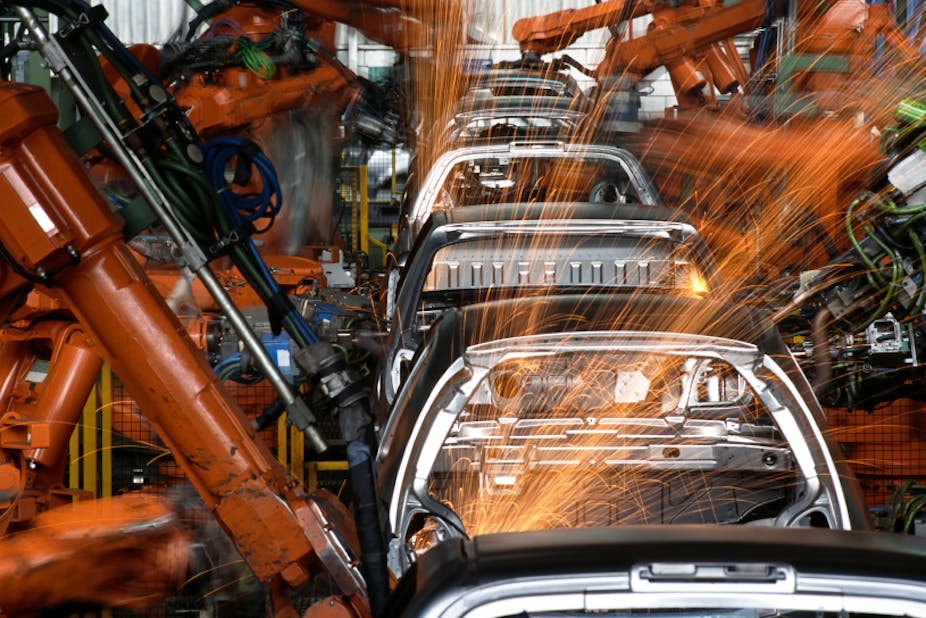Reports suggesting Holden is considering phasing out major parts of the manufacturing chain for the iconic Commodore points to a worrying trend of off-shoring the very skills manufacturing needs in order to survive.
While Holden have denied any decision has been made, the Association of Professional Engineers, Scientists and Managers (APESMA) chief Chris Walton has claimed hundreds of engineering and design jobs may go - with the potential for many more in the supply chain to be affected.
“We would expect thousands of jobs could go in the related auto manufacturing sector, so all of the suppliers to Holden, because not only would the design be done overseas, a significant proportion of the components of the car would be brought in from overseas and simply bolted together here,” Walton told the media.
The loss would represent a serious blow the Australian manufacturing community as the Commodore has been Australia’s best-selling car for the last 15 years, and represents more than half of large car sales.
As downsizing of major manufacturing facilities continues, the future of manufacturing in Australia has been put in focus once again - after the Qantas debacle, BlueScope’s export operations which affected 1400 employees, OneSteel who scrapped 400 jobs, Toyota which temporarily downsized its operations, Ford which already planned to reduce its workforce, and now the Commodore operations seem to be in danger.
There are a number of reasons why the manufacturing sector is suffering at the moment, the main influence being the strong dollar and the high cost incurred for potential buyers of Australian goods.
Although the public has become practically numb to this cycle, it is important to realise that the manufacturing sector isn’t isolated from the rest of the economy, representing a 10% portion - when the manufacturing sector experiences slim-to-none growth, the rest of the economy suffers.
As Green and Toner point out in an excellent article published on The Conversation:
“The future [of manufacturing] remains important for at least two reasons: first, manufacturing drives innovation and technological change – key elements of our productivity performance – and second it contributes to our external trade balance.
Looking to the future, manufacturing directly employs one in five engineers, and many more indirectly as consultants. Without a solid manufacturing base, Australia faces the prospect of losing scientific, engineering and computing expertise that has taken generations to nurture in research and production.”
The other issue at stake is the future well-being of the newly unemployed technical staff due to these cuts.
Most engineers have acquired skills that can be transferred to other areas, for instance, in public service departments such as Defence, consulting firms or private contractors.
However, no structure is in place for the highly skilled to be trained to use their knowledge in new environments. Also, the longer an employee has been working in the same workplace, the harder it becomes to adapt to new work culture and practices.
As long as we continue to blame globalisation for these job cuts, we will be missing the larger point, which is the loss of knowledge and skills due to a lack of support for the highly skilled to get them back into the workforce.
The public at large also agrees with this point of view. A 2009 poll by the Australian National University looking at the public opinion about science found 85% of Australians felt that science (including engineering) has made life easier for most people, rating the contribution of scientists to society above nearly all other professions.
According to the poll, engineering ranked fourth place behind doctors, teachers and scientists to their contribution to society.
However, the poll found Australians are less pleased with government’s response to the scientific community, believing politicians do not adequately consider scientific advice, or adequately regulate industry.

There is little doubt that Australia simply cannot compete with China and India when it comes to mass manufacturing over the long-term.
But Australia does have the resources to compete in the high-end manufacturing world, and there have been some investments made at various Australian universities (including the Australian National University) in high-end robotics manufacturing technology (which my PhD currently focuses on).
That is the future of Australian manufacturing.
However, more investment in training and equipment is required to keep our world-class experts and expand our knowledge base.
Australia needs to have a serious and healthy debate on what the “Australian made” brand represents, what sacrifices are necessary, and what type of protection and safety nets are needed to keep the manufacturing industry alive in this increasingly competitive and globalised world.

